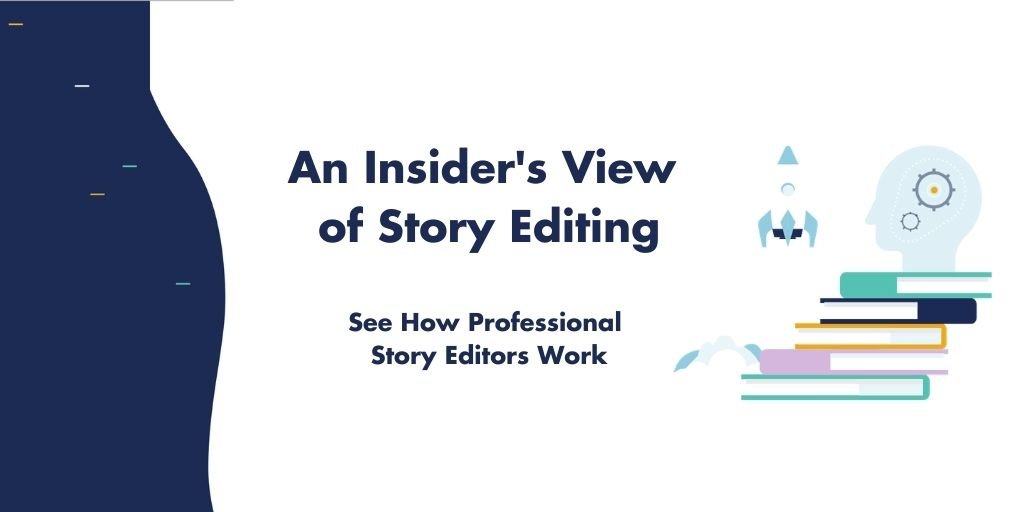An important question to ask when considering person vs fate is, “How do you fight fate?”
Another is, “Faced with a prediction of an inevitable future, how do you react?”
An exploration of the role of free will in our lives springs from stories that use the person vs. fate external conflict. With this external conflict, the fight is between the protagonist’s free will and a prediction of their future.
From Sophocles to Shakespeare, traditional western texts have used religious or supernatural forces that present a fate for the protagonist. Both Macbeth and Oedipus are given a prophecy. The end is set.
- How do you create tension in a person vs fate story?
- What will propel your reader through a person vs fate story?

Knowing where the story will end, the question becomes, “How?”
- How will the protagonist react?
- Are they motivated to do anything to avoid fate like Oedipus?
- Or to achieve it like Macbeth?
While this is an external conflict, it is strongly linked to the internal struggle of the character and their emotional reactions. For a closer look at all external conflicts, check out this blog by L. Cooke.
More modern works have integrated this sense of person vs fate through inescapable reality without relying on the supernatural by creating a situation that takes choice out of the character’s control.
Faced with a terminal diagnosis, an arranged marriage, or an authoritarian government that controls your life, how will the character behave? What impact will free will and choice play in the unfolding of this inescapable outcome?
How can you create this conflict in a person vs fate story?
What do you need? A character and a fate. Hence person vs fate.
Let’s start with the character.
Develop a strong sense of your protagonist’s strengths and weaknesses as well as their hopes, dreams and fears. Your protagonist will wrestle with fate!
So, what is that fate?
Whether a supernatural force or a more realistic outcome, knowing the details of the fate will shape your story. Maintain consistency with your character and story world. Will the fate come from an oracle, god or supernatural source? Will it arise from a more modern, realistic source like medicine or politics?
With these two key elements decided, you have a few options for the path forward.

Like Oedipus, the character may hear the prophecy and use everything in their power to avoid it. The reader watches as the choices and actions of the protagonist to evade fate become the path that leads the character to the ultimate destiny.
Like Macbeth, the character may see the prophecy as a positive destiny and work toward it. The protagonist struggle to attain the fate over any obstacles can lead to unexpected consequences.
Finally, consider the ending of your story. Will it be happy or tragic? Will the prophecy come true unexpectedly? Delight your readers with an inevitable but surprising ending.
Knowing the traditional elements of this external conflict, think of ways to subvert the reader’s expectations. What if, on hearing the prophecy, the protagonist denies or ignores it? The story could unfold with the reader aware of the protagonist’s future, creating tension through dramatic irony.
Writers may create tension in person vs fate stories for the reader by offering a riddle or unclear prophecy with clarity coming throughout the story. Tension is that sense of impending doom.
Kristina Stanley explains tension and conflict in this blog.
Through person vs fate, characters rail against the limitations and realities of being human.
Writers have an external conflict that challenges the protagonist to face their character and emotions. Readers question the power of free will and their own beliefs about fate and destiny.
- Does character create destiny?
- Are lives predetermined or shaped by choices?

Writers create space for readers to open their hearts and minds to big questions by offering a relatable protagonist struggling against the insurmountable.
So, when you are told you are going to have a baby, or lead an organization, or be wicked—remember you have literary examples to give you a glimpse into your choices. You might eventually find a way to accept your fate, like Elphaba in Wicked or fight it until you can’t escape it like Michael in The Godfather.
Person vs fate doesn’t have to be tragic or supernatural. Writers may explore the lack of free will, the role of character in destiny or the place of free will in how the protagonist faces an inevitable end.
Question for you…
How might you use person vs fate conflict to show character growth or add tension to your story?
Article Written by Lisa Taylor

Stories are powerful. Through my experience as an educator and librarian, I’ve explored how stories work and supported writers in finding their voices and honing their craft.
As a Fictionary Certified StoryCoach Editor, I offer a thorough, objective structural story edit that honours your voice, recognises and celebrates your skill, and offers clear, actionable ideas on ways to make your story shine even more. You can reach me through the Fictionary Online Community.
When do you ever get to see what a story editor delivers to a client if the client is not you?
If you’re thinking of becoming a story editor, this course is for you. Our course gives you an insider’s view of what happens in a story edit. This is similar to a structural or substantive edit for fiction.
Before you hire an editor or edit your own story, it’s important to understand what a story edit is.
Thirteen professional editors edited the same novel.
Each editor worked separately in Fictionary StoryCoach.
This course evaluates their edits and shows you what worked and what didn’t. We’ll show you two scenes before editing and after revisions based on the editors’ suggestions. We even compare the editors’ summary letters and per scene notes.
For writers looking to hire a professional story editor, this course shows you what you should receive from a story editor. It will also show you how an editor might look at your story.’
Sign up now for great value.
On sale for $39 USD. Use Coupon INSIDERSVIEW
Regular Price: $99.


